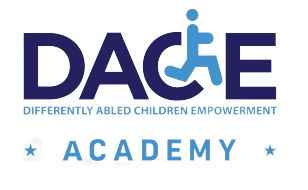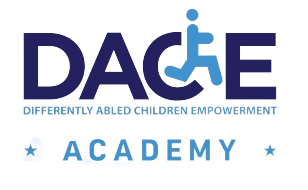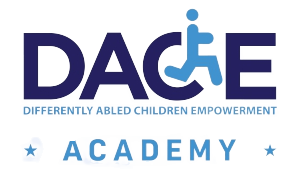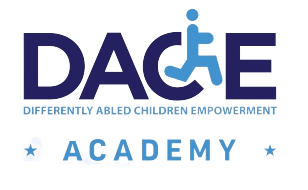Sample Balance Sheet
The mostly adopted approach is to divide assets into current assets and non-current assets. Current assets include cash and all assets that can be converted into cash or are expected to be consumed within a short period of time – usually one year. Examples of current assets include cash, cash equivalents, accounts receivable, prepaid expenses, advance payments, short-term investments, and inventories.
The notes contain information that is critical to properly understanding and analyzing a company’s financial statements. The balance sheet is an important financial statement as it will show a summary of a company’s assets, liabilities, and shareholders’ equity at a specific point in time. An accounting balance sheet is a portrait of the financial standing of a business at a point in time.
Balance sheet vs. Income statement vs. Cash flow statement
This account includes the amortized amount of any bonds the company has issued. Your people are your biggest asset, and they perform best only when you fully understand what drives them. HR analytics unlocks workforce data to improve hiring, retention and productivity. Many systems offer built-in reconciliation tools, saving you time and enhancing the efficiency and accuracy of this crucial process. Specialised software with features like bank feeds and automated matching can significantly streamline the reconciliation process. This helps catch discrepancies quickly, preventing errors from snowballing through the rest of the accounting process.
Current liabilities are customer prepayments for which your company needs to provide a service, wages, debt payments and more. He doesn’t have a lot of liabilities compared to his assets, and all of them are short-term liabilities. She’s got more than twice as much owner’s equity than she does outside liabilities, meaning she’s able to easily pay off all her external debt.
- Once complete, we’ll undergo an interactive training exercise in Excel, where we’ll practice building a balance sheet template using the historical data pulled from the 10-K filing of Apple (AAPL).
- However, some accounting rules do require some recorded costs to be reduced through a contra asset account.
- Plant assets (other than land) will be depreciated over their useful lives.
You can improve your current ratio by either increasing your assets or decreasing your liabilities. Equity can claiming dependent credit for a disabled spouse also drop when an owner draws money out of the company to pay themself, or when a corporation issues dividends to shareholders. Depending on the company, different parties may be responsible for preparing the balance sheet.
What Is the Balance Sheet Formula?
This is the period of time that it will be economically feasible to use an asset. Useful life is used in computing depreciation on an asset, instead of using the physical life. For example, a computer might physically last for 100 years; however, the computer might be useful for only three years due to technology enhancements that are occurring.
Assets Section (Current vs. Non-Current)
This financial report is similar to a personal financial statement that someone may fill out when applying for a loan to show their assets and liabilities. While the financial statements are closely intertwined and necessary to understand a company’s financial health, the balance sheet is particularly useful for ratio analysis. A balance sheet is a comprehensive financial statement that gives a snapshot of a company’s financial standing at a particular moment. A balance sheet covers a company’s assets as defined by its liabilities and shareholder equity.
Liquidity ratios
If the net realizable value of the inventory is less than the actual cost of the inventory, it is often necessary to reduce the inventory amount. The general guidelines and principles, standards and detailed rules, plus industry practices that exist for financial reporting. You can learn more about inventory and the related cost flows by visiting our Inventory and Cost of Goods Sold Explanation.
- Below are examples of the Shelley-Anne’s balance sheet using the different balance sheet layouts explained above.
- This is a high-level comparison where you check that the ending balance for each account in your general ledger matches the total shown in your supporting documents.
- Long-term liabilities, on the other hand, are due at any point after one year.
- Examples of such assets include long-term investments, equipment, plant and machinery, land and buildings, and intangible assets.
For example, Accumulated Depreciation is a contra asset account, because its credit balance is contra to the debit balance for an asset account. This is an owner’s equity account and as such you would expect a credit balance. Other examples include (1) the allowance for doubtful accounts, (2) discount on bonds payable, (3) sales returns and allowances, and (4) sales discounts. For example net sales is gross sales minus the sales returns, the sales allowances, and the sales discounts. The net realizable value of the accounts receivable is the accounts receivable minus the allowance for doubtful accounts. The balance sheet (also known as the statement of financial position) is a financial statement that shows the assets, liabilities, and owner’s equity of a business at a particular date.
All liabilities that are not current liabilities are considered long-term liabilities. All assets that are not listed as current assets are grouped as non-current assets. A common characteristic of such assets is that they continue providing benefit for a long period of time – usually more than one year. Examples of such assets include long-term investments, equipment, plant and machinery, land and buildings, and intangible assets.
Static Data
They’re important to include, but they can’t immediately be converted into liquid capital. This financial statement lists everything a company owns and all of its debt. A company will be able to quickly assess whether it has borrowed too much money, whether the assets it owns are not liquid enough, or whether it has enough cash on hand to meet current demands. If a company takes out a five-year, $4,000 loan from a bank, its assets (specifically, the cash account) will increase by $4,000. Its liabilities (specifically, the long-term debt account) will also increase by $4,000, balancing the two sides of the equation. If the company takes $8,000 from investors, its assets will increase by that amount, as will its shareholder equity.
This is true even though they are not directly recorded in the Retained Earnings account at the time they are earned. When the corporation purchases shares of its stock, the corporation’s cash declines, and the amount of stockholders’ equity declines by the same amount. Hence, the cumulative cost of the treasury stock appears in parentheses. Any bond interest that has accrued but has not been paid as of the balance sheet date is reported as the current liability other accrued liabilities.
It’s important to capture this in the equity section of the balance sheet — even though it wouldn’t be considered the same as a loan from the bank. Non-current, or long-term, assets, include investments and other less tangible assets which nonetheless can bring value to your business. Take a look at these examples to give you an idea of what to include. On a balance sheet, assets are usually described starting from the most liquid, through to those long-term assets which may be more difficult to realise. Let’s take a look at the type of assets which feature on a balance sheet. Whatever a business owns — its assets — have been financed by either taking on debt (liabilities), or through investments from the owner or shareholders (equity).
According to the equation, a company pays for what it owns (assets) by borrowing money as a service (liabilities) or taking from the shareholders or investors (equity). Keeping your balance sheet fresh and up to date can seriously level up your business decisions. In a 2021 survey for Accounting Today, 67% of accountants called the balance sheet the most underused yet crucial tool for business decision-making. Lenders will often look at your balance sheet when you’re applying for a loan. If you’re applying for an SBA 7(a) loan over $350,000, for instance, you’ll need to include one.
Inventory includes amounts for raw materials, work-in-progress goods, and finished goods. The company uses this account when it reports sales of goods, generally under cost of goods sold in the income statement. These ratios measure a company’s debt levels relative to its equity and assets.
It cannot provide a sense of financial trends playing out within a company on its own. For this reason, the balance sheet should be compared with the other statements and sheets from previous periods. Includes non-AP obligations that are due within one year’s time or within one operating cycle for the company (whichever is longest). Notes payable may also have a long-term version, which includes notes with a maturity of more than one year. Regularly reconciling your balance sheet accounts is a proven way to maintain accurate financial records, particularly as your business grows and adds complexity. Regularly updating your processes based on these reviews ensures continuous improvement and more reliable financial statements.






No Comments